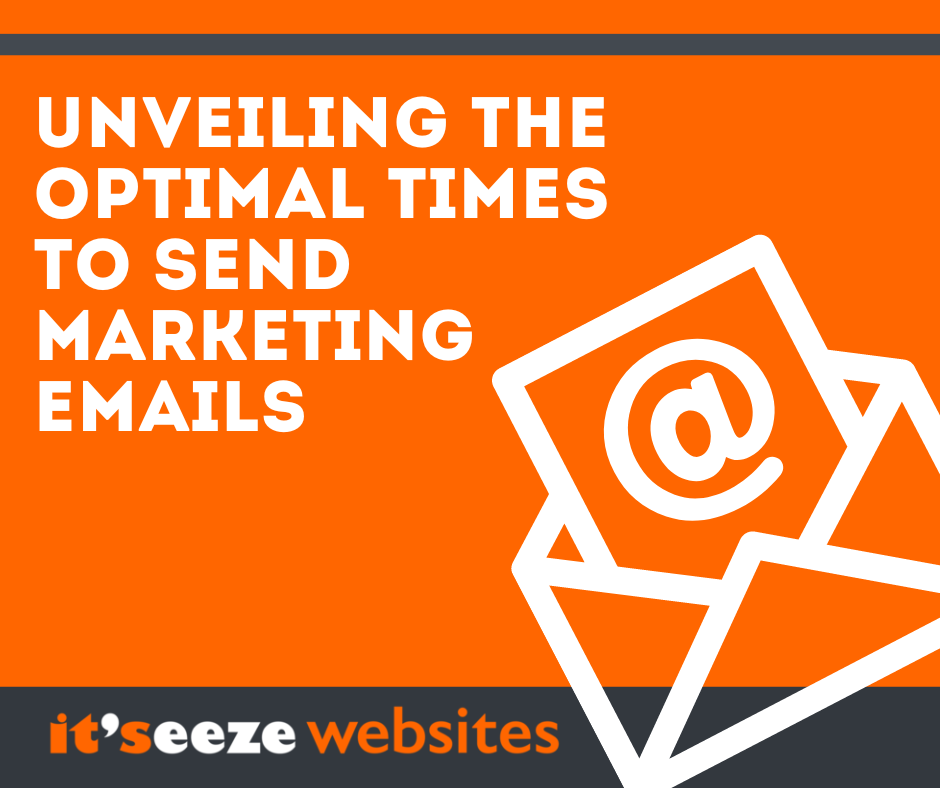Mastering the Art of Timing: Optimal Times to Send Marketing Emails
Posted on 11th August 2023
In today's digital age, where the in box has become a battleground for marketers seeking to capture their audience's attention, timing can be the key to success. Crafting a compelling marketing email is only half the battle; delivering it at the right moment can significantly impact open rates, click-through rates, and ultimately, your campaign's success. In this blog, we'll delve into the science behind email timing and unveil strategies for identifying the optimal times to send marketing emails.
Understanding the Science Behind Email Timing
Before we dive into the specifics, let's understand the science that underpins email timing. Human behavior and online habits play a significant role in determining when your emails are most likely to be noticed and engaged with.
Circadian Rhythms:
Human beings have natural daily rhythms that influence their behavior. Research suggests that people are more receptive to marketing emails during specific periods of the day when they are more alert and focused.
Day of the Week:
Different days of the week elicit distinct responses from email recipients. Factors like work schedules, leisure time, and stress levels can influence when people are more likely to engage with their in box.
Biorhythms:
Beyond the circadian rhythms, individuals also have weekly and monthly biorhythms that impact their behavior. Understanding these patterns can help you tailor your email schedule for maximum impact.
Optimal Times for Sending Marketing Emails
Mornings:
The early hours of the day, between 8:00 AM and 10:00 AM, are often considered prime time for sending marketing emails. Recipients are generally more focused and likely to check their in boxes upon starting their workday.
Lunch Breaks:
Around 12:00 PM to 1:00 PM, people often take a break from work and check their emails. Sending your messages during this time can catch their attention during their leisure moments.
Afternoons:
The period between 2:00 PM and 4:00 PM can also be opportune for sending emails. People might be seeking distractions or winding down their workday, making them more receptive to your content.
Evenings:
Sending emails between 6:00 PM and 8:00 PM can catch recipients as they relax after work. However, be cautious, as this time can also be associated with personal time, and over-sending could lead to annoyance.
Weekdays vs. Weekends:
Particularly Tuesdays, Wednesdays, and Thursdays, tend to yield higher open and click-through rates. However, weekends might work well for certain target audiences seeking weekend deals or leisure activities.
Time Zone Considerations:
If your audience is spread across different time zones, segment your email list and schedule messages to hit recipients' in boxes during their local prime times.
Testing and Analytics:
Every audience is unique, and what works for one may not work for another. Regularly test different send times and analyze performance metrics to refine your email timing strategy.
Tips for Successful Email Timing
Know Your Audience: Understand your target demographic's habits, preferences, and schedules to align your email timing with their routines.
Use Data Wisely:
Leverage data analytics and email marketing tools to track and analyze engagement metrics. These insights can help you identify patterns and refine your timing strategy.
A/B Testing:
Conduct A/B tests to compare the performance of emails sent at different times. Experiment with various days and times to optimize your approach.
Mobile Optimization:
With the majority of emails being opened on mobile devices, consider mobile user behavior when scheduling emails. People often check their phones during commutes, breaks, and evenings.
Respect Time Zones:
When sending emails to a global audience, respect time zone differences to ensure your messages arrive at convenient times.
Conclusion
Email marketing is an intricate dance between content, design, and timing. While crafting compelling messages is essential, understanding the science of timing can elevate your campaigns to new heights. By tapping into human behavior, utilizing data-driven insights, and staying flexible with your approach, you can optimize your email send times and achieve higher engagement rates, ultimately driving the success of your marketing endeavors. Remember, timing is not just an art; it's a science that, when mastered, can make all the difference in your email marketing strategy.
Tagged as: Email Marketing Colchester, Social Media Management
Share this post:
